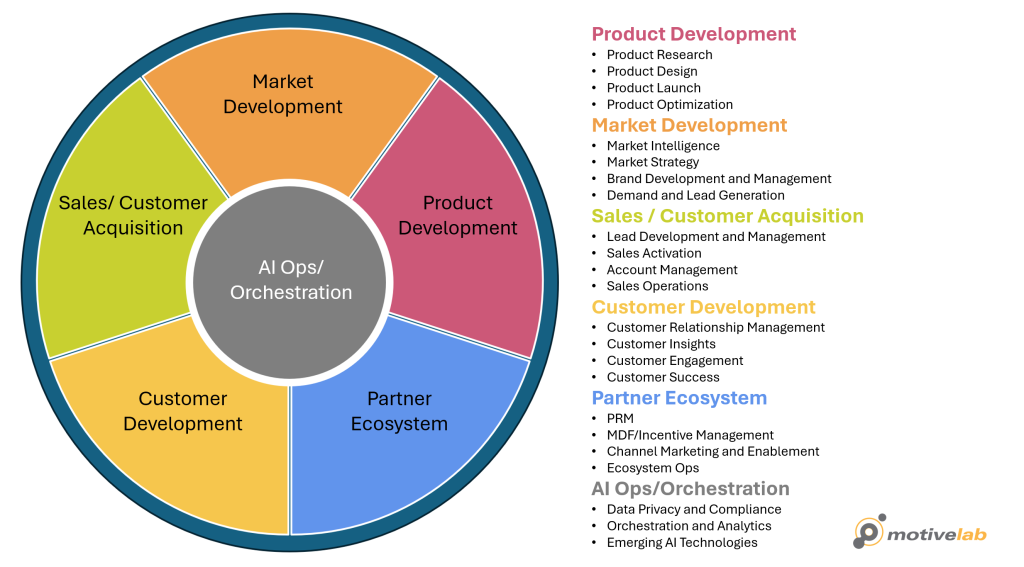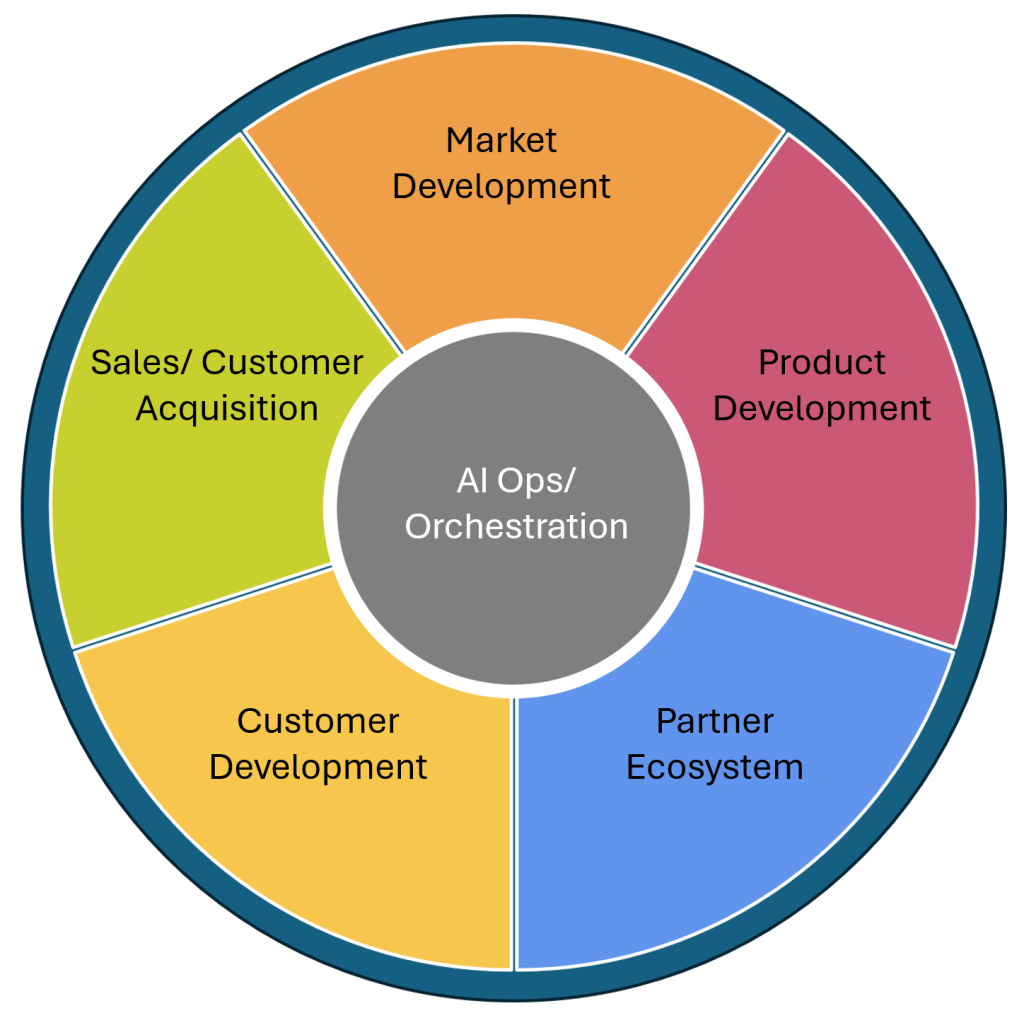MotiveLab is committed to clarifying the world of Marketing and Sales AI, dispelling hype and myth about AI applications, tracking the development of new technologies, and helping businesses integrate AI effectively to transform their marketing and sales practices.
The first step in this journey is establishing a map that makes sense of the complicated domain of marketing and sales technology. This map, or framework, will inevitably mature over time with feedback from our market, but this is the first iteration of the MotiveLab Marketing AI Framework.

Why a New Framework is Needed
There are many “Marketing Technology Landscape” maps you can find on the web. Most are entirely useless for understanding the wave of applications rolling out to disrupt marketing and sales.
Products are grouped by functionality, with no relation to where they fit in the marketing ecosystem, or how they relate to strategy. They’re better understood as a competitive landscape of tools that indicate where most companies are currently spending than where any individual company should.

In order to make sense of the emerging wave of AI tools directed at marketing and sales, we’ve developed a different kind of map, organizing marketing processes into categories of strategic workflows. The idea is to show the complete domain of marketing and sales functions–not just the funnel–and map emerging technologies to their purpose in the marketing ecosystem.
Marketing and Sales Functional Categories
MotiveLab looks at five marketing and sales functions, all of which are interconnected and non-linear.
- Product Development is about getting to, and maintaining, product-market fit.
- Market Development is about developing a brand position, generating demand and facilitating effective lead generation.
- Sales/Customer Acquisition is about working the funnel and closing deals.
- Customer Development is about growing your customer relationships and improving revenue flow.
- Partner Ecosystem is for those companies driving revenue through indirect and distributed sales partnerships.
In the emerging world of AI, all of these workflows and systems will eventually be informed and coordinated through AI Ops and Orchestration.

Within each of these categories are arrays of what we think of as “pillars” of that category:
Market Development
- Market Intelligence
- Market Strategy
- Brand Development and Management
- Demand and Lead Generation
Product Development
- Product Research
- Product Design
- Product Launch
- Product Optimization
Sales / Customer Acquisition
- Lead Development and Management
- Sales Activation
- Account Management
- Sales Operations
Customer Development
- Customer Relationship Management
- Customer Insights
- Customer Engagement
- Customer Success
Partner Ecosystem
- PRM
- MDF/Incentive Management
- Channel Marketing and Enablement
- Ecosystem Ops
AI Ops/Orchestration
- Data Privacy and Compliance
- Orchestration and Analytics
- Emerging AI Technologies
The Utility of this Framework
The purpose of this Framework is not to define a single, universal map for all businesses to follow in the same way, but to define a cohesive view of marketing and sales applications that makes it easier to understand their relationship to strategic workflows and objectives.
The relevance of various categories or pillars to each business will vary depending on the type and size of the business and the markets they serve. No company is likely to have all of these workflows in play, much less integrated with AI. Instead, they’ll have subsets of these workflows which emphasize their objectives and priorities.
SMBs will have a leaner system of workflows that emphasize lead gen and customer acquisition, while Enterprise businesses will have a broader set of workflows that encompass more strategic market and customer development, as well as channel and partner ecosystems.
MotiveLab’s Focus
Our intent at MotiveLab, beyond laying out a more comprehensive and strategic map of the AI application landscape, is to zero in on that subset of workflows across categories that define Go To Market activities, or what might be termed “GTM AI”.
While the scope of these workflows also varies widely according to business size and industry, there’s a much greater commonality across businesses within the GTM domain. More to the point, it is our belief that this is where the greatest initial disruption will happen to traditional sales and marketing practices as AI applications mature.
As we develop our research and consulting programs, our objective is to focus on the GTM AI domain, to identify the leading businesses and application disrupters, and to make sense of how they can help our customer community.
We would love to hear your feedback, criticisms and suggestions for the framework. We anticipate that it will evolve over time. But putting it down as a defined framework helps us focus our research and resources on those applications and businesses we think will bring most value to marketing and sales innovation.


Leave a Reply